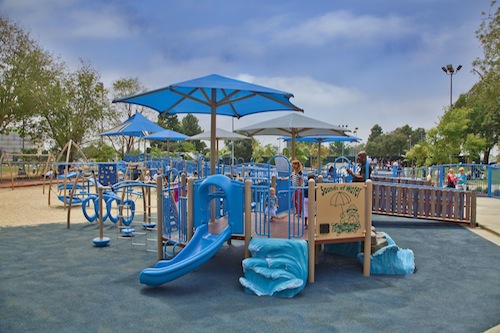A Focused Zone Approach.
We’ve learned a few things along the way that are essential to creating a space where all members of a school can thrive.
Consult with the users of your media space. Faculty and Students will use this space and are beneficial to include to allow them a sense of ownership and pride.
Determine the Functions of this space. Anytime you’re working to build an environment, whether it be a classroom, commons, or maker environment it is important to confer with students and faculty about their specific needs, involve them and make them feel more comfortable in the new space(s). Use these meetings to define several important details, and parameters for your project.
Imagine your media space as a puzzle. What does the final picture look like when you are done? What will be the focus of this puzzle? We recommend using our mediaspace planning questionnaire to ensure you cover any existing pieces to the puzzle. These existing pieces might include available budget, maximum anticipated occupancy, mobility and reconfigurability, architectural attributes, or functional zones that must exist in your space.
To ensure the design of an optimal media space, it is important to discuss possible layouts and functions of the space. Did you know that there are a few zones that will always exist in a media space naturally? For example, the Welcome Zone is in it’s own right, the center of the hub. Perhaps not physically, but figuratively it is the Zone where one would connect for help, checking in/out equipment, IT support or checking out a good book to read over the weekend.
Typically, there will also be a classroom or learning zone within the media space and it should reflect how the students will use it. From group projects to individual study time. One would also argue that it is essential to offer flexible seating such as moveable chairs, desks and unconventional seating to allow faculty and students a change of space.
On the off chance, that you haven’t heard, the media spaces today are not the libraries of the past where students and staff sit and read quietly, or are given instruction on how to use the internet for research projects. The media spaces of today are collaborative, and used for group projects, with multi-shaped tables that allow for combining groups to accommodate teamwork as well as independent study.
Other Zones to consider in your space are the Commons Zone and the Maker Space Zone. All though one could argue that these are similar to the learning zone, this is where we want to focus on the Primary Functions of each zone as well as the Flexibility of these Zones toInclude smaller functions. This is where learning how your faculty and students will use the space becomes important! Here are a list of functions you may want to ponder and see how they fit into your zones and environment as a whole. Trust me, this is going to help you to begin to put the pieces together. How many of these functions are needed in your media space to support your students and staff?
- Administration
- Quickstop
- Privacy or Single Pods
- Media/computer
- Display
- Reading/quiet
- Collaboration
- Independent study
- Presentation/lecture
- Book Stacks for existing Book Volume
- Storage
Perhaps when you conferred with others, you found a function that is necessary to your space that isn’t on our list, we’d love to hear about it!
OK, back to the puzzle… are you beginning to envision your media space? A bit of advice for you during the planning period of your new media space. We have a team of sales managers and designers ready to help you with creating your space. From 2D/3D space planning, custom product design, product consultation, 3D renderings, CET, CAD, ReVit and an enormous selection of finishes to make it your very own. You may know exactly what you want, or maybe you’re in need of some guidance, either way mediatechnologies is here to help you complete your media space puzzle!
Credit:https://www.mediatechnologies.com/whats-new/how-to-design-a-media-center-to-work-as-a-central-hub-for-learning





